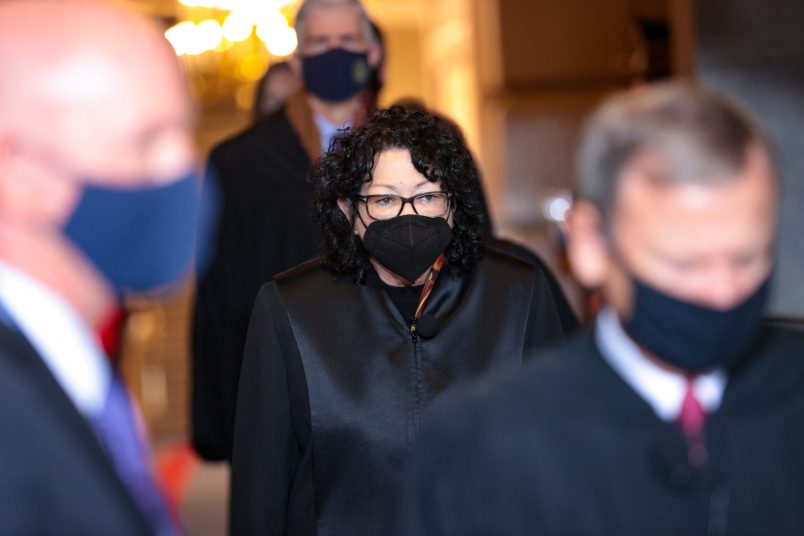The Supreme Court heard a case Tuesday that the conservatives could use to significantly reduce the enforceability of major social safety net programs like Medicaid.
The case, Health and Hospital Corporation of Marion County v. Talevski, is such an existential threat to programs that often help low-income, disabled and elderly people that activists had been working for months to get the case dropped before it reached the Court. They were ultimately unsuccessful.
What grew out of a run-of-the-mill Medicaid dispute case has become a question of whether beneficiaries of government spending programs will continue to be allowed to sue in federal court if states violate their rights while providing these services. That pathway for accountability is referred to as private rights of action under Section 1983, and has been upheld by the Supreme Court multiple times.
“This case is to Medicaid what Dobbs was to abortion,” one expert told TPM.
The attorney for a municipally-run, Indianapolis-area hospital corporation (HHC) and the Indiana solicitor general are trying to overturn decades of precedent allowing such lawsuits, arguing that there are other channels for relief beneficiaries could use. The United States is trying to split the baby, arguing that justices could preserve the 1983 actions while saying that they’re not available for the very small minority of nursing home inhabitants who live in public facilities. The Talevski family lawyer — representing the relatives of a man who has died and allegedly received poor treatment in an Indiana nursing home — wants both to preserve private rights of action under 1983 and to extend them to those nursing home inhabitants.
For much of the arguments, the justices parsed the text of the statutes and probed congressional intent when the laws were enacted. Many of those on the Court’s right wing have previously expressed hostility towards these kinds of rights of action.
Justice Sonia Sotomayor was one of the few to bring in the practical effects of cutting the 1983 suits.
“We have standing precedent and you’re asking us to overrule it,” she said to Indiana’s solicitor general. “Neither the federal government nor the states can possibly investigate and remedy every violation of these rights that are given to people. 1983 speaks clearly: they have a judicial remedy — why shouldn’t we just respect our precedent?”
It’s the same point congressional Democrats hammered in their amicus brief, where they warned that nixing the lawsuits could be “disastrous.”
“Neither federal nor state authorities have sufficient resources to provide complete oversight over the funding funneled into state programs,” the Democrats wrote. “Instead, their attention must often be dedicated to remedying systemic abuses, while preserving the option for aggrieved persons to seek individual remedies in federal court.”
Those lawsuits, experts have told TPM, operate as red flags for Health and Human Services, directing their limited enforcement power to the biggest violators. And as Talevski lawyer Andrew Tutt outlined, the other theoretical avenues to relief are not always actually open: he recounted that the Talevski family went to seven different medical malpractice attorneys when Gorgi Talevski was improperly medicated and booted from his nursing home, just to be told that the claim wasn’t worth enough money for them to take the case.
“This family was crying out for help and using every possible lever at their disposal,” he said. “Section 1983 was their last resort.”



